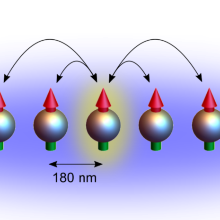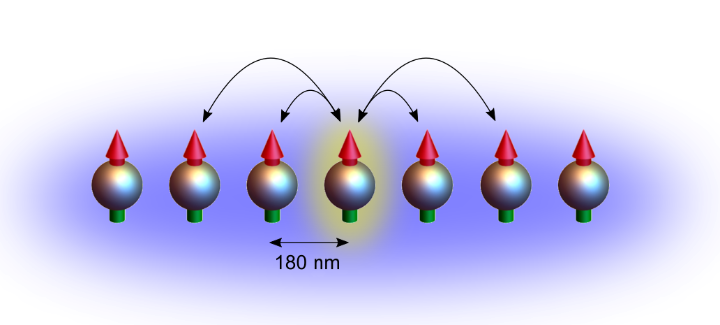Modern materials are based on the highly complex interplay of many particles that follow the laws of quantum physics. The aim of the project “Magnetic-Atom Quantum Simulator” (MAQS) is to develop a new quantum simulation platform that can model this interplay with high precision. The collaborative project is funded with EUR 1.2 million, with Prof. Tilman Pfau and Dr. Tim Langen from the Institute of Physics (5) at the University of Stuttgart taking a leading role. The project is part of the QuantERA initiative through which the German Federal Ministry of Education and Research (BMBF), together with the European Commission and other international partners, supports research in the field of quantum technologies.
Quantum technologies provide many new opportunities for applications that are highly relevant for industry and for our society as a whole. These applications include, for example, the secure transmission and processing of data, high-precision measurement and imaging techniques, or the simulation of complex systems. In all of these applications, quantum technologies have the potential to greatly outperform existing technical solutions and to make previously impossible calculations and simulations possible.
Quantum simulation to accomplish what would push supercomputers to their limits
Many-particle quantum systems, in particular, often show exotic phenomena that are technologically highly relevant for new materials. Well-known examples are superconductivity and special magnetic properties. How exactly these and many other phenomena arise, however, could not yet be fully understood, because this would require complex simulations of the interaction of the underlying particles - a task in which even modern supercomputers quickly reach their limits. In such simulations, the required memory space increases exponentially with the number of particles involved. Already for computations with 200 particles, more numbers than there are atoms in the universe would have to be processed in the computer’s memory.
The so-called quantum simulation now makes it possible to research such quantum systems despite this complexity. For this purpose, a model of the quantum system to be examined is constructed and measured in an experiment instead of on a computer - the quantum world thus simulates itself, so to speak.
Research into new states of matter is getting closer
Quantum systems containing many particles, in particular, often show exotic phenomena that are technologically highly relevant for new materials. Well-known examples for this are superconductors and certain magnetic materials. However, even though we understand all basic quantum mechanical laws between individual particles, it is often impossible to understand their collective interplay. Such an understanding would require large-scale computer simulations that can quickly become too complex even for modern supercomputers. The reason for this is that in such simulations, the required memory space increases exponentially with the number of particles involved. Already for computations with only 200 particles, more numbers would have to be processed in the computer’s memory than there are atoms in the entire universe.
Quantum simulations make it possible to learn more about the behaviour of such quantum systems despite their high degree of complexity. For this purpose, a model of the quantum system to be examined is constructed in a well-controlled experiment instead of on a computer. The quantum world is thus used to simulate itself.
The goal is to find new states of matter
In the context of the three-year project “Magnetic-Atom Quantum Simulator” (MAQS), the research team lead by Prof. Tilman Pfau and Dr. Tim Langen from the Institute of Physics (5) at the University of Stuttgart will develop a new type of such a quantum simulator. In contrast to previous quantum simulators, their new experiment will be based on magnetic atoms that interact with each other over larger distances. This is expected to lead to new states of matter that have never been studied before. “The joint project enables us to work on this important topic together with six other international project partners from France, Spain, Italy, Austria, and Poland,” says Prof. Tilman Pfau.
The researchers from Stuttgart will trap the atoms in periodic structures made of laser light in order to model the crystal structure of real materials. To measure the results, new, super-resolution microscopy techniques will be developed.
Many processes are difficult to examine with existing quantum simulators,” explains Dr. Tim Langen. With the help of the new quantum simulator, on the other hand, it will be possible to study and understand a large number of novel quantum phenomena and states of matter, as well as their dynamic behavior. The researchers hope that this will provide the key foundations for future technological applications.
Expert Contact:
Dr. Tim Langen, University of Stuttgart, Institute of Physics (5), phone.: +49-711-685-60149, email



